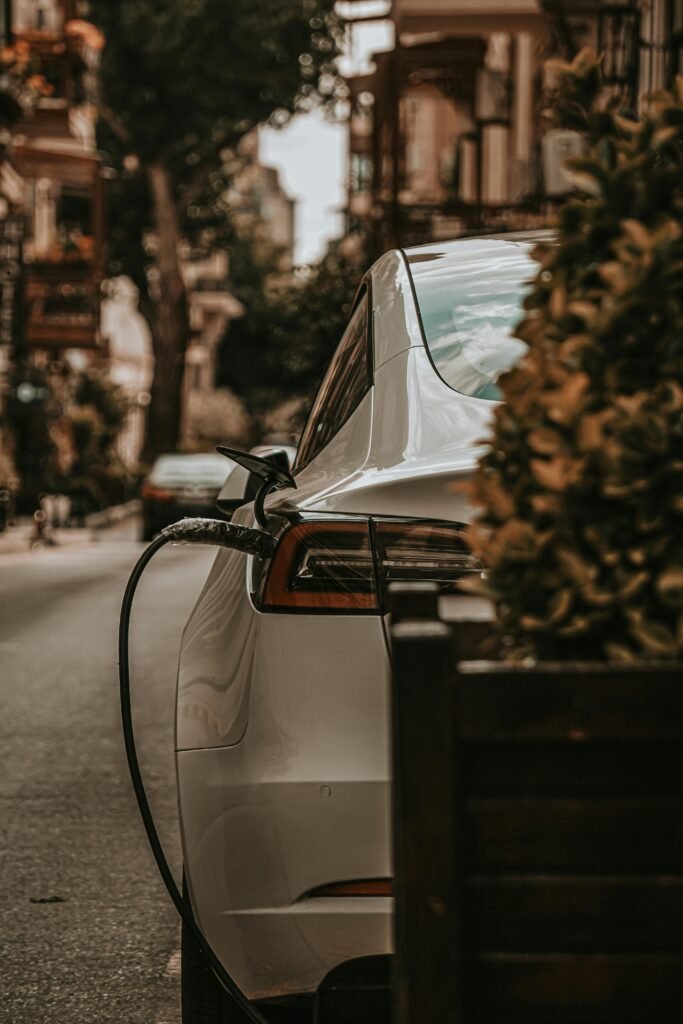Is a Hybrid More Eco-Friendly Than an Electric Car?
I’m putting the Mazda 2 Hybrid through its paces to see if this little eco-friendly marvel is actually greener than an electric vehicle (EV).
I know—it’s basically a Toyota Yaris Hybrid in a different suit, but hey, a hybrid’s a hybrid, right?
I’m testing this thing across three different routes: the city, the highway, and some winding country roads.

Along the way, I’ll also pit it against an EV to see if it truly holds its own in the battle of the green machines.
I’m taking the Mazda 2 Hybrid as my test unit. It’s essentially the same car as a Toyota Yaris Hybrid, so it doesn’t matter which one I drive. I’m amazed by how little fuel they use.
It got me thinking: is this hybrid actually greener than an electric vehicle?
Urban Drive
Well, I’m going to try and find out. I’ve planned three routes: one in the city, one at 70 mph, and one on country roads.
I’ve driven these routes before in different cars to compare fuel economy.
For this test, I’ll also compare this car’s performance to what a typical electric car would likely achieve.
I’m assuming an EV would do about 3.4 miles per kilowatt-hour. Additionally, I’ll factor in how much CO2 is likely produced when manufacturing this car versus a similar-sized electric vehicle.
I’m starting this test from cold. Although it’s quite hot today (23°C outside, with the sun beating down), it’s just started raining. The rain seems short-lived, though, as there’s plenty of blue sky, and the clouds look like they’ll clear soon. Air conditioning is set to 20°C. Trip computer reset. Let’s go.
I’ve driven this car a lot—probably around 2,000 miles—and I know the trip computer overreads fuel economy by about 5%.
I’ll factor that in when calculating the results. I’m already feeling much better with the air conditioning on; I didn’t want to waste the cold start, so I set the cameras up in the heat.
The sun had the cabin boiling before the rain briefly dropped the temperature to 19°C.The reason I didn’t want to waste the cold start is that engines use more fuel when they’re cold.
If I started the test with a warm engine, I’d get better fuel economy, but that’s not realistic. In day-to-day life, your car isn’t already up to temperature when you head out in the morning—it’s cold.
At the moment, fuel economy is reading 46.5 mpg. I’m not trying to drive this car in an especially economical way—just how I normally drive it.
In terms of performance, it’s fairly average: 0–60 mph in 9.6 seconds, with 116 PS of power and 120 Nm of torque. For a car of this size and class, that’s actually pretty good.
The official WLTP combined cycle for this car is 70 mpg with the 16-inch, 195-mm-wide wheels. If you opt for the lower-spec model with 15-inch, 185-mm-wide wheels, it’s rated at 74 mpg.
But those are lab-based tests. Let’s see what it does in the real world, driven by a human.
The car I’m using is the Mazda 2 Hybrid Select, which is the top-of-the-range model. It comes with features like dual-zone climate control, a wireless charging pad, blind-spot monitoring, a heads-up display (clear and bright), LED headlights, and more premium seat coverings.
However, the larger 16-inch wheels do slightly reduce fuel economy compared to the 15-inch ones.
CO2 Emissions During Manufacturing
Comparing the CO2 emissions from manufacturing a petrol car versus an electric car is challenging. It’s hard to determine exactly how much CO2 is produced for every component, from the hub nut to the wiper blade.
Cars are made in different factories, using different materials, making it nearly impossible to calculate an accurate figure.
A reasonable estimate, though, is that manufacturing a car like this hybrid generates roughly 10 tons of CO2.
For an electric car of a similar size, the figure is closer to 15 tons. The extra five tons primarily come from the 50-kWh battery, as it’s estimated that manufacturing each kilowatt-hour of battery capacity produces about 100 kg of CO2.
These figures are rough and far from precise. Do truly accurate numbers even exist? Some studies try to provide clarity. For example, Volvo conducted a comparison between two of their cars: the XC40 Recharge (electric) and its petrol equivalent. Both are built in the same factory, making the comparison somewhat fair.
Volvo’s study found that, using the global average energy mix for electricity production, it would take 90,000 miles of driving before the electric XC40 became greener than its petrol counterpart.
If the EV were powered entirely by renewable energy (wind and solar), that figure would drop to 29,000 miles.
It’s clear that the debate between hybrids and EVs isn’t just about what happens on the road—it starts in the factory.
My test will hopefully shed some light on how this hybrid compares to a theoretical EV in everyday use. Stay tuned for the results!
Car Life Average
Does 90,000 miles mean that by the time the car is producing less CO2 over its whole life cycle, it’s ready for the scrap heap?
Well, no. Volvo said they based their study on the car having an expected usage phase of 124,000 miles. That doesn’t mean the car will only last 124,000 miles; it’s just the average.
Some cars are crashed and written off long before then, but other cars go on to do 200,000, 300,000, or even 400,000 miles.
I myself have a car that has over 200,000 miles on it. In fact, Volvo holds the record at the moment with a Volvo in the U.S. that has over 3 million miles.
Considering that most cars are used for between 110,000 to 120,000 miles before they’re scrapped, I understand cars can last a lot longer, but that is the average. Even if it takes 90,000 miles for the electric car to produce less CO2 on average over its life cycle, it does produce less CO2 than the equivalent petrol car.
City Drive Results
I will look at the fuel economy a little bit further forward. That’ll do. Park and fuel economy is 79.1. That’s very impressive.
Now I am going to knock 5% off that figure. That’s because I’m used to these cars, and I know they overread by about 5%.
Now, you may be thinking, why not just do the fill tank method?
When you’re only using 3–4 liters of fuel, the fill tank method isn’t very accurate because the pump clicks off at different levels. It’s not always exactly the same. And if you’re doing a full tank, that little bit of difference doesn’t really matter.
But when you’re only using 3–4 liters, that half-a-liter difference makes a big difference.
So, I’m actually better off going by the trip computer and adjusting it based on my previous experience with these cars.
Now you could also say, why not fill the tank to the very top until you can see the fuel at the top of the filler neck?
Well, you don’t want to do that because that can damage the EVAP system. So I’m not going to do that. I think the best thing I can do is use the trip computer and knock 5% off.
Driving at 70 MPH
I’m now heading to the 70 mph portion of the test. Well, I know what it’s like—I’ve driven them quite a bit. It actually has plenty of power for the size of the car. It’s good. It’s better than usual at 50 mph. Pop the signal on, and it easily gets up to motorway speeds and cruises along pleasantly.
I’m going to try and stay at 70 mph as much as I can on this test. If you’re interested, at 70 mph this engine is pulling 2,000 revs, although it can be less when I’m going downhill.
In fact, it can switch off entirely when I’m going downhill, and it can rev higher uphill. This is actually up a slight gradient right now. I’m doing 70 mph on the dot, and it’s just a whisker over 2,000 revs.
Okay, just over halfway through the 70 mph trip, but I haven’t been able to do 70 mph all the way. I’ve tried my best to do it as much as possible. I’ve averaged 60.2 mpg so far. I’m going to turn around at the roundabout and go back. It just follows the car in front at a safe distance.
I’m doing 56 mph at the moment, but I have been able to do 70 mph most of the way back so far. Something I’m not going to be able to include in this test is how much CO2 is produced in mining, refining, and transporting the petrol to the pump.
Of course, petrol doesn’t appear in the pump by magic. It has to get there somehow, and that process produces CO2. But it’s very difficult to work out how much CO2 because oil comes from all over the world.
Depending on which oil field you’re using, it’s going to make a difference in how much CO2 is produced during extraction. Then there’s the transportation of that oil and the petrol once it’s refined.
It’s so variable, I just can’t put a number on it—I just don’t know. So I’m going to have to leave it out.
But something to consider is that whatever petrol I use, whatever CO2 this car produces from burning the petrol, even more CO2 has been produced from getting the petrol to the pump.
Okay, just coming off the 70 mph road now into a 30 mph zone. What the fuel economy is when I stop—minus 5% for the overestimation from the trip computer—but I don’t know yet because I haven’t stopped yet. I’m just putting it on screen early so you have more time to digest the figure. It says 68.8, so I’m going to minus 5% off that, and that’s the figure for the 70 mph run.
Drive at Country Road
My car has three modes: Eco, Normal, and Comfort. I’m keeping it in Normal throughout this test.
At the moment, I’m on one of the faster stretches of the Country Road with a 60 mph limit. The limits on these roads vary—30, 40, 50, and 60, which is typical for most country drives.
It’s quite smooth, although it does feel a little bumpier than the variant with the smaller wheels. Still, it has plenty of grip for how I’m using it. So far, I’m averaging 82.9 miles per gallon. I’m just surprised how often this thing is in EV mode.
It looks like I’m catching up to some cars now, so I won’t be able to make the most of the 60 mph limit like I was before because they’re going a bit slow. But I’m about to enter a 30 mph zone. Quite often when I hit a 30, I’m the only car sticking to 30 through the villages.
The cars in front leave me behind, and then I have the 60 mph zone to myself again. But I get the feeling that’s not going to be the case this time because I’m already doing 30, and I haven’t even reached the 30 zone yet. Here we go.
I might pull over for a few minutes to let these cars get ahead because they seem to be really slow.
It looks like there’s a bit of a convoy, and I do want to make the most of doing 60 when I can, so that this test is fair to how you would normally drive on these roads if you’re able to actually do close to the speed limit.
I did pull over into a lay-by because that train of cars was so slow. I was doing 28 mph in the village, and then when I left the village and hit the 60 mph zone, I was only doing 35 mph. I didn’t think that was going to give a fair representation of how economical this car is on these kinds of roads when you’re making the most of them and getting close to the speed limit.
I’m not driving dangerously; I’m not accelerating harshly or braking harshly—just gentle acceleration and gentle braking, but safely within the speed limit.
I was amazed at how well the car handled driving down the middle of the road for quite some time there—that was a little bit scary.
Terrible driving, really. Anyway, I was going to say, I’m amazed at how economical this car is. I’m getting 78.5 mpg right now at 55 mph.
I’m not pressing the gas pedal much, but it does pick up speed when needed.
Okay, I’m finishing up now with 83 mpg on the trip computer. I’m going to dock that by 5% for reasons I’ve already explained, but that’s still incredibly impressive. Is it good enough, though, to make this greener than an electric car?
CO2 Result
I’ve got some figures. The average across all three runs was 73 Imperial mpg, with the 5% adjustment I made because the trip computer over-reads.
So how many grams of CO2 is that? I worked it out, and if you were to drive 125,000 miles, which is about the typical life cycle of a car—how long a car stays on the road for—it’s actually a bit more than average.
People are starting to hold on to their cars longer these days, so I’m using that figure. It’s 18 metric tons of CO2 from petrol. That’s quite a bit. There’s more, but I can’t work it out because there’s no way of knowing how much CO2 is generated from mining, refining, and getting that petrol to the pump.
So, I’m going to ignore that and just say 18 tons. But online, I’ve read you can add 30% to that figure. I’m not sure how reliable that source is or whether that’s an accurate figure, though. I doubt it because how would you know?
It depends where the fuel comes from and how it’s mined. It must vary quite a bit depending on those factors.
Now, how about the electric car?
I remember last year I tested an electric Corsa, and I averaged 4 miles per kWh. I said I was going to assume the electric vehicle does 3.4 miles per kWh because that’s what I’m used to.
Generally, electric cars tend to be bigger and less efficient. But it’s only fair to compare the Mazda 2 hybrid with that little Corsa because they’re a similar size. And the Corsa did 4 miles per kWh, so that’s what I’ll use.
How accurate the Corsa’s trip computer is, well, I don’t know.
I’m also going to take into account a 25% loss because the electricity has to travel out of the power station, through the high-voltage power lines, through the low-voltage power lines, and then into your battery.
This process is not 100% efficient. The losses do vary, but assuming the electric grid is producing electricity at 182 grams per kWh—which was the average for 2022, and that’s actually pretty good—it means that the electric car, considering inefficiency, would produce about 7 tons of CO2 for 125,000 miles.
So, the electric car uses a lot less CO2, or should I say, it produces a lot less CO2.
How much CO2 is produced in the creation of the vehicle? Well, that’s hard to figure out. Manufacturers have to account for how much CO2 is generated in producing every single component, and every step of the process.
It’s not easy, but a fair estimate is to say the petrol hybrid produced 10 tons of CO2, and the electric Corsa produced 15 tons.
These figures are most likely wrong, but it’s a fair assumption to make, and it’s fair to add 5 tons for the 50 kWh battery in the electric Corsa.
So, if we add the figures together, we have 28 tons now for the petrol hybrid and 22 tons of CO2 for the electric Corsa.
Both cars have a lot in common. They both have a steering wheel, seats, an interior, suspension, and a chassis.
The difference is the petrol hybrid has an engine, while the electric vehicle has a massive 50 kWh battery. You could say the hybrid has a battery, but it’s really tiny—doesn’t even reach a kilowatt-hour.
What are you going to do with that big battery?
Well, some people say it has a second life and can be used for grid storage, so when the wind isn’t blowing and the sun isn’t shining, we can store renewable energy and become more reliant on renewables.
But that’s missing the point. That battery is not going to last forever, and eventually, it will need to be disposed of. So, second life or no second life, what are you going to do with it?
The good news is you can recycle car batteries, and you can actually get more than 90% of the materials out of them for reuse. But how much CO2 is generated in the recycling of that battery?
That depends on where the recycling plant is and where they get their energy from. So, based on my tests and assumptions about manufacturing and recycling, because we don’t have these exact figures, it looks like the Mazda 2 hybrid, over its expected life, produces more CO2 than the equivalent electric car.
Misleading
An argument I often hear against electric cars is that if someone goes out and buys a new electric car, and they don’t drive far enough to save enough CO2 to make up for the extra CO2 generated in the manufacturing of the car, they’re actually causing more harm than good. But this is inaccurate and misleading.
How much CO2 is generated in manufacturing should be spread out through the life of the car, because that’s how much usage the car is getting—not over the first owner’s usage, which could vary.
They could keep it for the car’s entire life or get rid of it after five minutes. It’s not really relevant. What would be relevant, though, is not how many owners the car has, but how long it lasts on average.
How long a car lasts has nothing to do with how long it can last; it’s about the economy.
I used 125,000 miles in this video because that’s a bit more than average now, and people are starting to hold on to their cars longer.
It’s a nice round figure, and it’s an assumption—a ballpark figure. How long a car lasts depends on how many people are buying new cars.
If more people buy new cars, used cars get cheaper earlier, meaning they are scrapped at a younger age. If fewer people buy new cars, used car prices go up because of supply and demand. Used cars are worth more for longer, so they take longer to become worthless and get scrapped at an older age.
But this isn’t really relevant to the electric car. This has been the case since people started buying and selling cars.
The difference is the electric car has a higher CO2 burden up front and a lower CO2 burden during the car’s running. But overall, it seems that, over its life cycle, the electric car produces a bit less CO2.
If people stop buying new cars and just use what’s already on the road, it would be good for CO2 in the short term, as there would be no CO2 emissions from manufacturing.
But we wouldn’t be making progress long term either. We’d be driving aging cars that aren’t as safe as newer ones.
If people stop buying new cars, manufacturers stop innovating. You end up with cars that are less safe because there’s no need to develop new ones.
After all the numbers and miles, it turns out the Mazda 2 Hybrid doesn’t just look good in the city, it’s got some serious fuel-saving chops too.
In fact, over its lifetime, this hybrid produces a bit more CO2 than a similarly-sized electric car, but not by much. However, the electric car has that big, heavy battery dragging its carbon footprint down a bit at the start.
If I were to drive the Mazda for a few hundred thousand miles (fingers crossed, right?), it could still make a solid argument for itself in the eco-friendly showdown.
But let’s be real—if you want to feel like a true green warrior, maybe the EV is the way to go, even if it takes a little longer to pay back its carbon debt. Either way, one thing’s for sure: both of these rides are better for the planet than that gas-guzzling SUV you’ve got parked outside.


